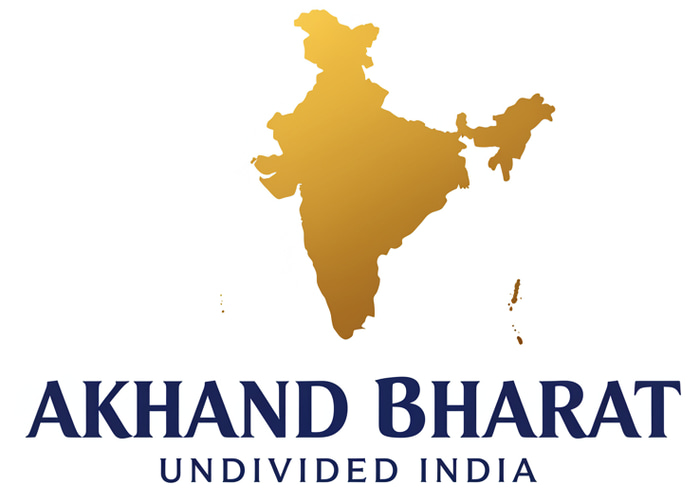Exploring the Vision of Akhand Bharat: A Unified India Concept
Akhand Bharat envisions the unification of regions across modern-day South Asia, celebrating shared cultural, spiritual, and historical ties. This blog delves into the significance of ancient connections and the values that bind countries like India, Pakistan, Nepal, and others, emphasizing the importance of our common heritage.
5/8/20243 min read


Akhand Bharat: The Vision of a Unified South Asia Rooted in Shared Heritage
The idea of Akhand Bharat (translated as Undivided India) is a powerful cultural and spiritual concept that imagines a unified South Asia—comprising present-day India, Pakistan, Bangladesh, Nepal, Bhutan, Sri Lanka, Afghanistan, Maldives, Myanmar, and Tibet. Far beyond a geopolitical ambition, the concept primarily emphasizes the deep-rooted civilizational unity, ancient connections, and shared values that continue to bind these regions even in modern times.
Understanding the Concept of Akhand Bharat
The term Akhand Bharat originates from Sanskrit, where Akhand means "undivided" or "unbroken," and Bharat is the traditional name for India. It reflects the notion that the Indian subcontinent was historically and culturally one continuous civilization, irrespective of modern national boundaries. The idea draws inspiration from the unity of ancient empires like the Maurya and Gupta dynasties, which governed vast territories across South Asia and facilitated a common framework of governance, education, commerce, and spiritual practice.
Cultural and Spiritual Foundations
At the heart of Akhand Bharat lies a celebration of shared cultural and spiritual values:
Spiritual Unity: The great spiritual traditions of Hinduism, Buddhism, Jainism, and Sikhism all originated and flourished within this region. Sites like Bodh Gaya (India), Lumbini (Nepal), Taxila (Pakistan), and Anuradhapura (Sri Lanka) are spiritually significant to people across national boundaries.
Languages and Literature: Sanskrit, Pali, and Prakrit served as linguistic bridges, giving rise to regional languages and shared literary traditions. The Mahabharata, Ramayana, and Vedas were known throughout the region, influencing local cultures and philosophies.
Trade and Migration: Historically, the subcontinent functioned as an interconnected economic zone with shared trade routes, river systems, and marketplaces. The Grand Trunk Road, for instance, connected what is now Afghanistan to Bengal, facilitating commerce, culture, and communication.
Ancient Political Unity
While the modern idea of the nation-state is relatively new, the concept of political unity is not foreign to the Indian subcontinent. Empires such as:
The Maurya Empire under Emperor Ashoka, which stretched from modern-day Afghanistan to Bengal and from the Himalayas to the southern peninsula,
The Gupta Empire, known for its golden age of science, art, and learning,
The Mughal Empire, which left behind a legacy of architectural grandeur and administrative cohesion,
...illustrate periods of political and administrative unity that transcended modern borders.
Philosophical Underpinnings
The essence of Akhand Bharat is not territorial conquest but cultural unity and peaceful coexistence. It is rooted in Vasudhaiva Kutumbakam—the ancient Indian philosophy meaning "the world is one family". Akhand Bharat is thus seen by many as a vision of harmony, where people across the region acknowledge their common roots while respecting modern-day sovereignty.
Modern Interpretations and Debates
In contemporary times, Akhand Bharat has been interpreted in various ways:
Cultural Revivalism: Many scholars, historians, and spiritual leaders advocate revisiting and reviving the cultural and spiritual ties that once bound South Asia. Festivals, pilgrimages, and academic collaborations reflect this ongoing engagement.
Political Controversy: Some political groups have used Akhand Bharat in a geopolitical context, raising concerns about irredentism. However, many others stress that the vision is symbolic and cultural, not aimed at altering national boundaries.
Diaspora Engagement: Among the South Asian diaspora across the globe, Akhand Bharat often finds resonance as a symbol of unity and shared identity, transcending the divides of nationality and religion.
Significance in the 21st Century
In an era marked by global conflicts and identity politics, the idea of Akhand Bharat offers a hopeful narrative of reconciliation and unity. It invites people of South Asia to rediscover their shared legacy—in cuisine, language, music, dress, and spiritual thought—and to collaborate on issues like climate change, health, education, and regional development.
By focusing on the values that unite rather than divide, Akhand Bharat encourages a return to the timeless wisdom of peaceful coexistence, cooperation, and mutual respect.
Conclusion
Akhand Bharat is more than a map—it is a mindset and a memory, reminding the people of South Asia of their shared journey through time. Recognizing and honoring this interconnected past does not require dissolving borders but rather fostering bridges of understanding and unity. In doing so, the region can work together toward a harmonious and prosperous future, firmly rooted in the richness of its common heritage.
